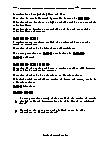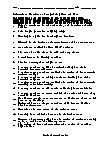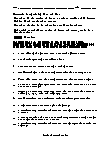Categorizing Data & Bias Worksheets
What is Bias in Data? We live in an era of technological advancement, where every step is taken as per the previous data sets. Moreover, companies now utilize advanced data analytics to perform decision-making steps. However, sometimes stats are not enough and can also be misinterpreted. The chief cause of making wrong decisions is known as bias. Bias not only means that the data is displaying the wrong results, but wrong results can also occur due to human error. However, let's put it this way; if we are trying to calculate how many people prefer online classes over normal classes, we won’t take surveys from an entire city. We will take a small sample size and conduct our research with them. More so, that researchers usually take those data results into account which will give them their desired results. There are different kinds of bias that you must keep in mind. Outliers, Confirmation Bias, Selection Bias, Overfitting and Underfitting, Confounding Variable.
-
Basic Lesson
Demonstrates the differences between qualitative and quantitative data. Practice problems are provided. Qualitative data deals with descriptions. Qualitative data is observed and not measured. Quantitative data deals with numbers. Quantitative data is measured.
View worksheet -
Intermediate Lesson
Explains how to determine bias. Practice problems are provided. Data that is not influenced by outside factors is unbiased. Univariate data involves a single variable and is not to explain relationships. Bivariate data involves two variable and is used to explain relationships and causes.
View worksheet -
Independent Practice 1
For questions 1-8, determine if the problem deals with qualitative or quantitative data; 9-15, determine biased or unbiased data; 16-20, determine univariate or bivariate data. The answers can be found below.
View worksheet -
Homework Worksheet
Determine if the number of hours a student studies will improve his/her final examination scores. Determine whether it is univariate or bivariate data. Deals with 2 variables- number of hours and score, so it is a bivariate data. Example problems are provided and explained.
View worksheet -
Topic Quiz
12 Categorizing Data & Bias problems for students to work on at home. Example problems are provided and explained.
View worksheet
Think About This One!
"One person's constant is another person's variable."
-- Susan Gerhart







